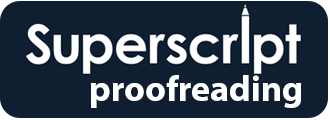
In March 2018, I wrote a blog post called Proofreaders, libraries and a love of reading. It was about my introduction to libraries from a very early age and my continued use of them, about the decline in the use of libraries and, sadly, about the closure of many of them across the UK.
Libraries during lockdown
My relationship with libraries was interrupted by the lockdown. At the start of the lockdown in March 2020, I had four library books that were waiting to be returned and would soon be overdue. Instead, they sat in a sad little stack in the hallway until I was able to return them at the end of September, as libraries were closed temporarily because of the pandemic. Many are now open (October 2020) for a ‘grab and go’ service, which means you have 30 minutes to choose your books. I’ve not done that yet, and it’s been weird not having my usual reliable supply of books for the last few months. I’ve bought a few (and feel very lucky I’ve had the money for such luxuries when times are so hard for so many) and had a stack given to me for a recent birthday.
The Library Book

My daughter is also an avid reader, and over the summer she kept reading out bits of a book she was reading, called The Library Book, by Susan Orleans. It’s about a devastating fire in 1986 that forced the Los Angeles (LA) Public Library to shut for seven years. Four hundred thousand books were completely destroyed and 700,000 more were badly damaged by fire and/or water. It was initially estimated that it would take three years to restore these books. The steady stream of amazing facts and figures that my daughter read out to me over the course of reading the book prompted me to read it too.
I rarely read non-fiction, but this book sounded really interesting and worth a go. It’s fascinating, and a real page-turner. The mystery at the centre of it is who started the fire and why? The book delves into the history of libraries and their role in our lives today and in the past. The descriptions are fascinating and really illuminating. The vital role that women played in libraries is focused on in parts, including a mention of the 18-year-old woman who was the head of the Los Angeles Public Library in 1880, when men almost completely dominated such roles (and most other areas of public and working life). Women were not even allowed to have their own library cards and were confined to a single room in the building.
The fact that libraries were and are so much more than lenders of books brings out really interesting snippets of information in the book. In the 1960s in the US, it was seen as critical to have a reference desk with a telephone service that allowed the caller to ask a question and the librarian would do the research and call back with the answer. A kind of early Google search, I suppose. Some of the questions could be pretty obscure, and you can imagine a librarian rolling their eyes and heaving a sigh of exasperation before walking miles up stairs and along stacks to answer queries like this: ‘Patron inquiring whether Perry Mason’s secretary Della Street is named after a street, and/or whether there is a real street named Della Street’ (p. 219).
One aspect of libraries today that I’d not given much thought to is the many people who seek refuge in them because they’re homeless. Many librarians today in the US have training in how to reach out to people in this predicament, such as by offering them the contact details of organisations that can help them get accommodation and money to live on.
A much-needed laugh out loud
One of the features I really liked was the list of books noted at the start of each chapter. These ranged from solid academic titles to the downright weird, eccentric and/or really funny but always had a link with what was discussed in the chapter. Some examples, as I flick through the book randomly, are Toward a Literate World, by Frank Charles Laubach (p. 185), Let’s Go Goldmining, by J. P. Hall (p. 123), and Drunk, Divorced & Covered in Cat Hair: The True-Life Misadventures of a 30-Something Who Learned to Knit After He Split, by Laurie Perry (p. 85).
Bits of the book made me laugh out loud, which is surely a good thing in the middle of a pandemic lockdown. The funniest bit for me was the description of how one of the heads of the LA library, Charles Lummis, was very concerned about the pseudo-science books that were becoming popular in the early twentieth century. He had a skull and crossbones sign added to the front page of these books. He wanted notes put inside them to say ‘This book is of the worst class that we can possibly make in the library. We are sorry that you have not any better sense than to read it’ but was persuaded to change this to ‘For Later and More Scientific Treatment of this Subject, Consult——‘. Librarians filled in the blanks with supposedly better books on that particular topic (p. 145). Not at all amusing, though, is the story behind Lummis’s appointment as head. The existing female head of the library, Mary Jones, was fired for no reason other than the (all male) board’s decision to appoint a male head, Lummis, despite his total lack of experience and training. A petition against this course of action was signed by 1,000 women, who then took part in a protest march. However, the city attorney later confirmed it was completely legal for Jones to be fired simply because it had been decided that a male head of the library would be preferable. Although she initially refused to hand in her keys and kept turning up to work, Jones eventually had to concede defeat and give up her post.
This book paints a picture of the importance of libraries past and present and of the dedication of librarians to the service they provide. Towards the end, there’s a fascinating discussion about the techniques used to find out how fires are started and how they spread that has relevance for the mysterious fire that the book deals with. The style of the book is more like a novel than a traditional non-fiction book, and that’s probably why I found it so readable. It’s easy to immerse yourself in facts and figures when they are bound up in a fascinating mystery that’s steeped in history, personal journeys, well-rounded characters and … well, books.
Reference
Orleans, Susan. 2019. The Library Book. Atlantic Books.
